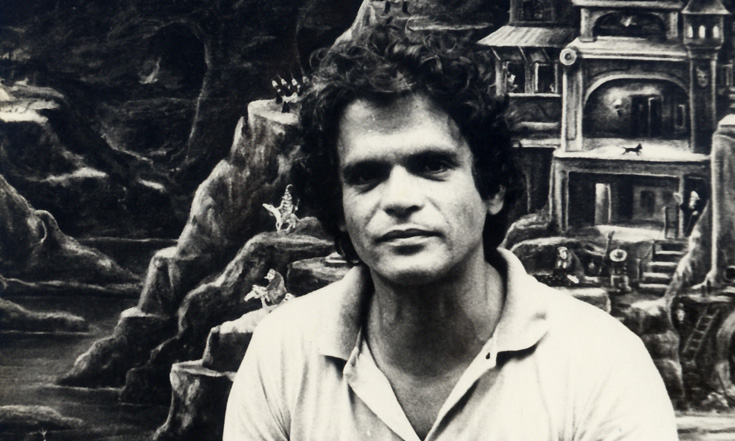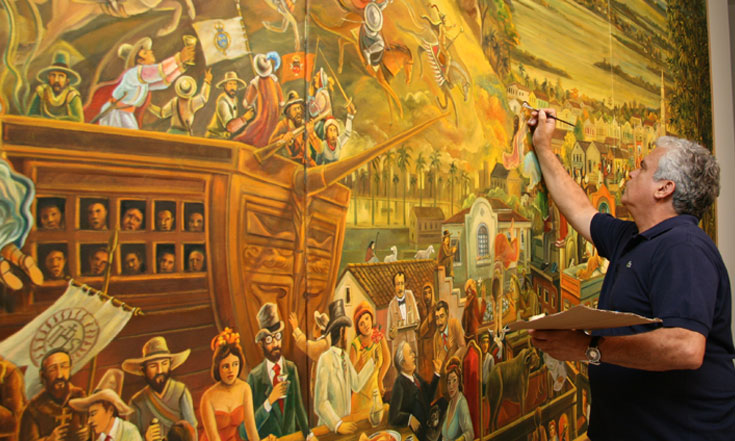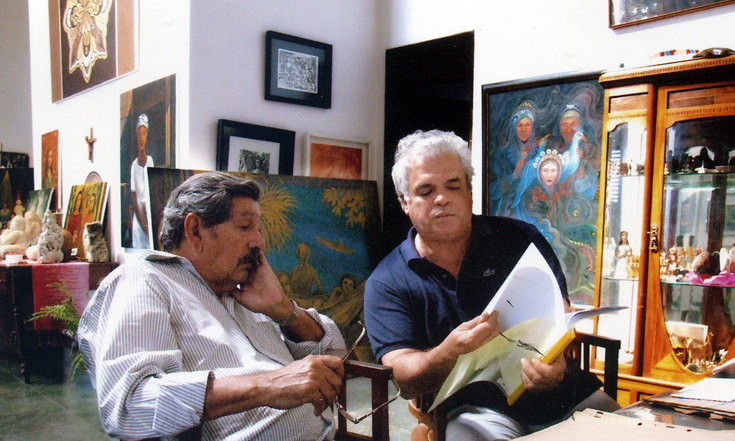Painting as he always painted
Flávio Roberto Tavares de Melo was born in João Pessoa, Paraíba, Brazil, on February 15, 1950, son and grandson of artists – his grandfather on this father’s side, Pedro Damião, was a remarkable photographer and his father, Arnaldo, Besides his brilliant career as a doctor, spent his spare time drawing in pen and ink, having illustrated a number of books and produced hundreds of vignettes for local newspaper.
As a child, Flávio showed his talent for drawing and painting, and Dr. Arnaldo was his first instructor and, since then he has never stopped exercising and experimenting in this artistic branch. He attended the course on painting taught by the artist Raul Córdula, at the Arts Sector of Federal University of Paraíba (UFPB) and when he was 18 years old he started taking lessons from the painter and engraver Hermano José, who, at that time, already enjoyed a high reputation as an artist. Tavares finished his high school studies and soon afterwards started the course of Sociology, at UFPB, from which he withdrew in the third year to be a full-time artist. He was just a little older that twenty and he had already exhibited his pictures in Recife, Rio de Janeiro and São Paulo where, in 1976, he published his album of drawings, O Pavão sem Mistérios (the peacock without mystery), introduced by the famous Brazilian cartoon artist Ziraldo. At this time he studied painting in some of the most prestigious American Universities (Yale University, University of Connecticut and Simon Rock College, where he also conducted a workshop), and also in Cayenne (French Guyana). He also took the chance and exhibited his paintings in all these places.
Next he had the opportunity to enter the German art market under the guidance of the couple Jürgen and Maria do Carmo Vogt, she also a native of Paraíba and president of the German-Brazilian Cultural Institute in Berlin. This lady would become a good friend of his and the agent of his works in Germany. His first solo exhibition in Germany took place in 1981, in Berlin, in the Laden Gallery, presented by Mrs. Karoline Müller. After this exhibition Flávio conquered a substantial and respectable art market, and, gradually reached a considerable number of collectors of his works, Mr. Stahl being one of the first among these. A few years later Tavares exhibited his paintings in Jerusalem (Israel), and, since the he has returned four times to exhibit in Germany, always supported by the Vogts, Whom Flávio acknowledges as the major publishers of his works in Germany. Having been awarded many prizes, Flávio Tavares participated in many important exhibits in large cities in Brazil and abroad, having experimented successfully with different techniques and supports (oil on canvas, drawing, watercolor, stone and wood carving, metal engraving, woodcut and lithograph). Furthermore he also painted stage scenery and taught courses, workshops, lectured to students of art and produced more the ten murals and panels both in Paraíba and in other states in Northeast Brazil.
A man of his time, Flávio Tavares produced a series of drawings criticizing the military dictatorship, the so called “years of lead” in Brazil (1964-1984) and he still produces charges denouncing political and social problems in Paraíba, irreproachable lines. It is true that these messages become more evident in black and white drawings, but sometimes we can detect in the same painting two planes apparently dissociated whose symbiosis results in a pictorial discourse charged with social and political criticism and denunciation which is often ignored by the system that would rather withdraw into its convenience. Illustration in Flávio Tavares’ art is do mysterious and sophisticated that sometimes we are led to ask ourselves what is most eloquent: the messages contained in pictures in which characters and compositional elements abound of the “silence” that pervades his simpler works. With such a rich career we are led to conclude that Flávio Tavares is a matchless artist who certainly has a lot to show us because of his creative power and his rich imagistic vocabulary.
Eudes da Rocha



